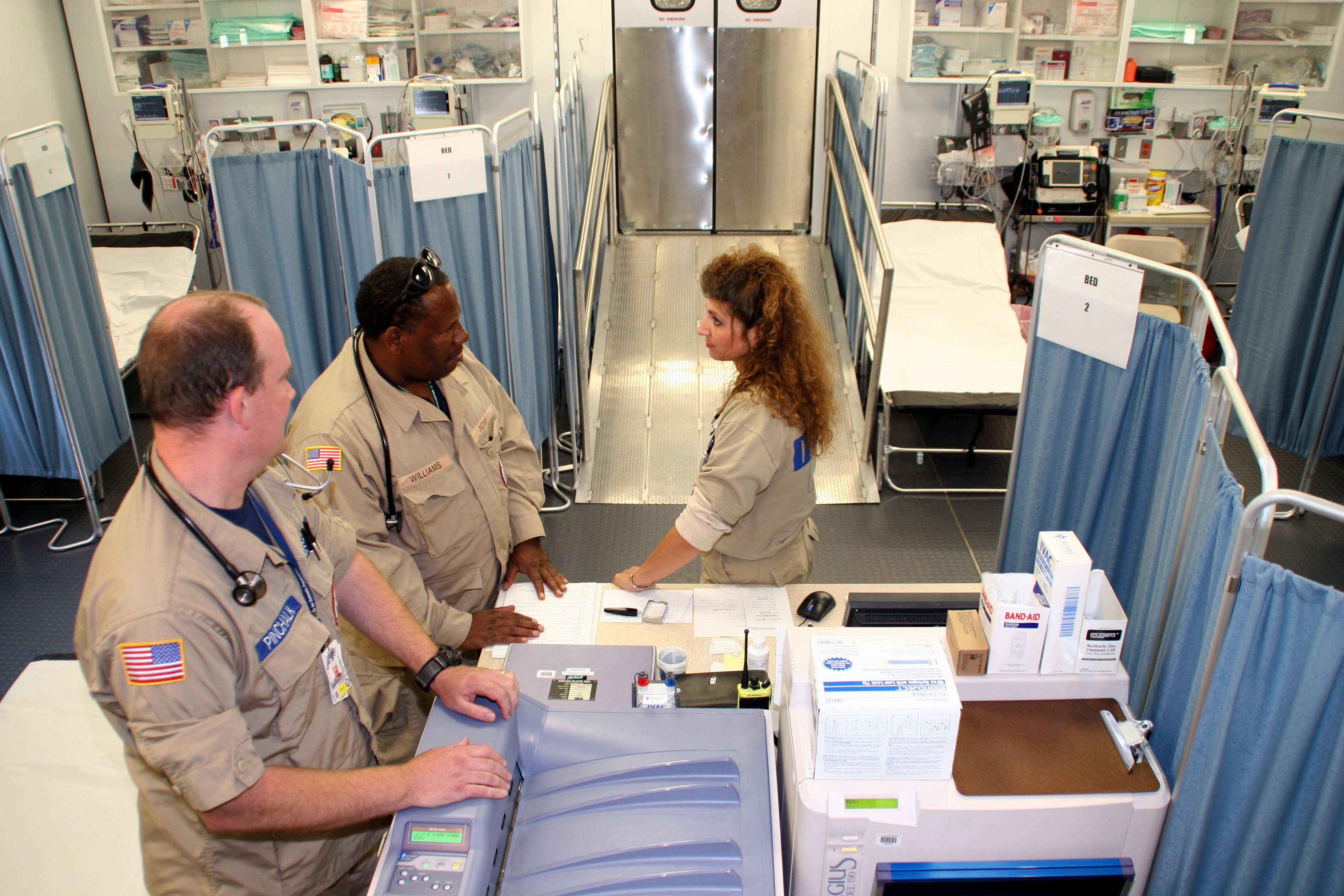|
ExtendSim
ExtendSim (formerly known as Extend) is a simulation software, simulation program for modeling discrete event simulation, discrete event, continuous simulation, continuous, agent-based, Discrete rate simulation, discrete rate, and mixed-mode processes. There are three ExtendSim packages: CP for continuous processes; DE which adds discrete event technology; and Pro which adds discrete rate and Reliability block diagram, reliability block diagramming modules. History Model construction Models are created by dragging blocks from a library into a model worksheet. Blocks are connected together to create the logical flow of the model. Data for the model resides in the parameters of the blocks and in a proprietary database. New blocks can be created by combining existing blocks into a single hierarchical block or by programming a block in ExtendSim's c (programming language), c-based language, ModL. The major libraries in ExtendSim are: Application areas Sample applications include ... [...More Info...] [...Related Items...] OR: [Wikipedia] [Google] [Baidu] |
List Of Discrete Event Simulation Software
This is a list of notable discrete-event simulation A discrete-event simulation (DES) models the operation of a system as a (discrete) sequence of events in time. Each event occurs at a particular instant in time and marks a change of state in the system. Between consecutive events, no change in t ... software. Commercial Open Source Further reading * * References {{reflist Simulation software discrete event simulation software Events (computing) ... [...More Info...] [...Related Items...] OR: [Wikipedia] [Google] [Baidu] |
Discrete Rate Simulation
In the field of simulation, a discrete rate simulation models the behavior of mixed discrete and continuous systems. This methodology is used to simulate linear continuous systems, hybrid continuous and discrete-event systems, and any other system that involves the rate-based movement or flow of material from one location to another. Areas of application Industrial areas where discrete rate simulation is used include: * Bulk material handling (e.g. minerals and ores, powders, particles, mixed wastes, wood chips) * Liquids and gases * Pulp and paper processing * Oil and gas pipelines * Traffic * High speed/volume production lines in the food & beverage, consumer products, and pharmaceutical industries. Compared to discrete-event and continuous simulation Discrete rate simulation combines the event-based timing of discrete event simulation and the continuous variables calculations found in continuous simulation. It predicts and schedules events when the system needs to calcula ... [...More Info...] [...Related Items...] OR: [Wikipedia] [Google] [Baidu] |
ActiveX Component
ActiveX is a deprecated software framework created by Microsoft that adapts its earlier Component Object Model (COM) and Object Linking and Embedding (OLE) technologies for content downloaded from a network, particularly from the World Wide Web. Microsoft introduced ActiveX in 1996. In principle, ActiveX is not dependent on Microsoft Windows operating systems, but in practice, most ActiveX controls only run on Windows. Most also require the client to be running on an x86-based computer because ActiveX controls contain compiled code. ActiveX is still supported as of Windows 10 through Internet Explorer 11, while ActiveX is not supported in their default web browser Microsoft Edge (which has a different, incompatible extension system, as it is based on Google's Chromium project). ActiveX controls ActiveX was one of the major technologies used in component-based software engineering. Compared with JavaBeans, ActiveX supports more programming languages, but JavaBeans supports more ... [...More Info...] [...Related Items...] OR: [Wikipedia] [Google] [Baidu] |
Simulation Software
Simulation software is based on the process of modeling a real phenomenon with a set of mathematical formulas. It is, essentially, a program that allows the user to observe an operation through simulation without actually performing that operation. Simulation software is used widely to design equipment so that the final product will be as close to design specs as possible without expensive in process modification. Simulation software with real-time response is often used in gaming, but it also has important industrial applications. When the penalty for improper operation is costly, such as airplane pilots, nuclear power plant operators, or chemical plant operators, a mock up of the actual control panel is connected to a real-time simulation of the physical response, giving valuable training experience without fear of a disastrous outcome. Advanced computer programs can simulate power system behavior, weather conditions, electronic circuits, chemical reactions, mechatronics, hea ... [...More Info...] [...Related Items...] OR: [Wikipedia] [Google] [Baidu] |
Process Optimization
Process optimization is the discipline of adjusting a process so as to optimize (make the best or most effective use of) some specified set of parameters without violating some constraint. The most common goals are minimizing cost and maximizing throughput and/or efficiency. This is one of the major quantitative tools in industrial decision making. When optimizing a process, the goal is to maximize one or more of the process specifications, while keeping all others within their constraints. This can be done by using a process mining tool, discovering the critical activities and bottlenecks, and acting only on them. Areas Fundamentally, there are three parameters that can be adjusted to affect optimal performance. They are: * Equipment optimization The first step is to verify that the existing equipment is being used to its fullest advantage by examining operating data to identify equipment bottlenecks. * Operating procedures Operating procedures may vary widely from person ... [...More Info...] [...Related Items...] OR: [Wikipedia] [Google] [Baidu] |
Computer Model
Computer simulation is the process of mathematical modelling, performed on a computer, which is designed to predict the behaviour of, or the outcome of, a real-world or physical system. The reliability of some mathematical models can be determined by comparing their results to the real-world outcomes they aim to predict. Computer simulations have become a useful tool for the mathematical modeling of many natural systems in physics ( computational physics), astrophysics, climatology, chemistry, biology and manufacturing, as well as human systems in economics, psychology, social science, health care and engineering. Simulation of a system is represented as the running of the system's model. It can be used to explore and gain new insights into new technology and to estimate the performance of systems too complex for analytical solutions. Computer simulations are realized by running computer programs that can be either small, running almost instantly on small devices, or large- ... [...More Info...] [...Related Items...] OR: [Wikipedia] [Google] [Baidu] |
Discrete Event Simulation
A discrete-event simulation (DES) models the operation of a system as a ( discrete) sequence of events in time. Each event occurs at a particular instant in time and marks a change of state in the system. Between consecutive events, no change in the system is assumed to occur; thus the simulation time can directly jump to the occurrence time of the next event, which is called next-event time progression. In addition to next-event time progression, there is also an alternative approach, called incremental time progression, where time is broken up into small time slices and the system state is updated according to the set of events/activities happening in the time slice. Because not every time slice has to be simulated, a next-event time simulation can typically run faster than a corresponding incremental time simulation. Both forms of DES contrast with continuous simulation in which the system state is changed continuously over time on the basis of a set of differential equations ... [...More Info...] [...Related Items...] OR: [Wikipedia] [Google] [Baidu] |
Emergency Department
An emergency department (ED), also known as an accident and emergency department (A&E), emergency room (ER), emergency ward (EW) or casualty department, is a medical treatment facility specializing in emergency medicine, the acute care of patients who present without prior appointment; either by their own means or by that of an ambulance. The emergency department is usually found in a hospital or other primary care center. Due to the unplanned nature of patient attendance, the department must provide initial treatment for a broad spectrum of illnesses and injuries, some of which may be life-threatening and require immediate attention. In some countries, emergency departments have become important entry points for those without other means of access to medical care. The emergency departments of most hospitals operate 24 hours a day, although staffing levels may be varied in an attempt to reflect patient volume. History Accident services were provided by workmen's compensat ... [...More Info...] [...Related Items...] OR: [Wikipedia] [Google] [Baidu] |
C (programming Language)
C (''pronounced like the letter c'') is a General-purpose language, general-purpose computer programming language. It was created in the 1970s by Dennis Ritchie, and remains very widely used and influential. By design, C's features cleanly reflect the capabilities of the targeted CPUs. It has found lasting use in operating systems, device drivers, protocol stacks, though decreasingly for application software. C is commonly used on computer architectures that range from the largest supercomputers to the smallest microcontrollers and embedded systems. A successor to the programming language B (programming language), B, C was originally developed at Bell Labs by Ritchie between 1972 and 1973 to construct utilities running on Unix. It was applied to re-implementing the kernel of the Unix operating system. During the 1980s, C gradually gained popularity. It has become one of the measuring programming language popularity, most widely used programming languages, with C compilers avail ... [...More Info...] [...Related Items...] OR: [Wikipedia] [Google] [Baidu] |
Database
In computing, a database is an organized collection of data stored and accessed electronically. Small databases can be stored on a file system, while large databases are hosted on computer clusters or cloud storage. The design of databases spans formal techniques and practical considerations, including data modeling, efficient data representation and storage, query languages, security and privacy of sensitive data, and distributed computing issues, including supporting concurrent access and fault tolerance. A database management system (DBMS) is the software that interacts with end users, applications, and the database itself to capture and analyze the data. The DBMS software additionally encompasses the core facilities provided to administer the database. The sum total of the database, the DBMS and the associated applications can be referred to as a database system. Often the term "database" is also used loosely to refer to any of the DBMS, the database system or an appli ... [...More Info...] [...Related Items...] OR: [Wikipedia] [Google] [Baidu] |
ActiveX Data Objects
In computing, Microsoft's ActiveX Data Objects (ADO) comprises a set of Component Object Model (COM) objects for accessing data sources. A part of MDAC (Microsoft Data Access Components), it provides a middleware layer between programming languages and OLE DB (a means of accessing data stores, whether databases or not, in a uniform manner). ADO allows a developer to write programs that access data without knowing how the database is implemented; developers must be aware of the database for connection only. No knowledge of SQL is required to access a database when using ADO, although one can use ADO to execute SQL commands directly (with the disadvantage of introducing a dependency upon the type of database used). Microsoft introduced ADO in October 1996, positioning the software as a successor to Microsoft's earlier object layers for accessing data sources, including RDO (Remote Data Objects) and DAO (Data Access Objects). ADO is made up of four collections and twelve ob ... [...More Info...] [...Related Items...] OR: [Wikipedia] [Google] [Baidu] |



